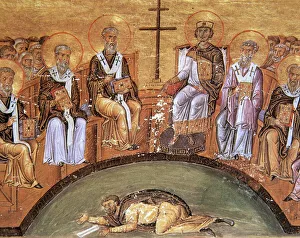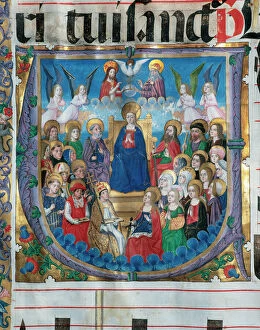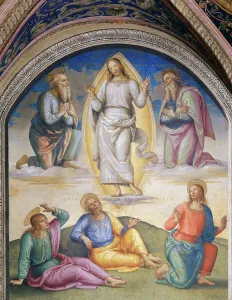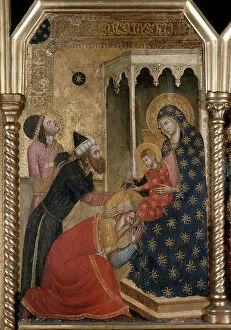Aureole Collection
"Aureole: A Glimpse into Heavenly Encounters and Divine Grace" In the realm of art, the concept has been beautifully depicted throughout history
All Professionally Made to Order for Quick Shipping
"Aureole: A Glimpse into Heavenly Encounters and Divine Grace" In the realm of art, the concept has been beautifully depicted throughout history, capturing moments that transcend earthly boundaries. From Fra Angelico's masterpiece "The Coronation of the Virgin, " where a celestial glow surrounds the blessed figures, to Byzantine frescoes like "The Transfiguration" showcasing Christ enveloped in radiant white light alongside Moses and Elijah. Even saints find solace in this ethereal radiance. Saint Isidore, patron of plowers, receives divine assistance as an angel aids him in tilling the fields. The Last Conversation between St. Benedict and St. Scholastica immortalizes their spiritual connection through a heavenly aura that emanates from their encounter. Artists like Hugo van der Goes bring us closer to heaven with his enchanting painting "Adoration of the Shepherd, " where humble shepherds bask in a golden halo surrounding baby Jesus. Meanwhile, depictions such as "The Ascension" transport us to Byzantine realms where divine light illuminates Christ's triumphant ascent. Music too finds its place within this celestial theme; Gregorian chants preserved within Choirbook number 3 echo through time with melodies that seem to resonate from beyond our world. Saints themselves become bearers of aureoles - Saint Aloysius Gonzaga shines brightly as an Italian Jesuit who dedicated his life to serving others while Saint Rita of Cascia is captured in an engraving exuding grace and holiness. Aureoles also find their way onto tapestries like the Apocalypse Tapestry or Apocalypse of Angers, which depict biblical scenes imbued with otherworldly luminescence. Through these artistic representations spanning centuries, we catch glimpses into a realm beyond our own - one filled with divinity and transcendent beauty. Aureoles serve as reminders that there is more than meets the eye; they invite us to contemplate the spiritual and embrace the grace that surrounds us.















































